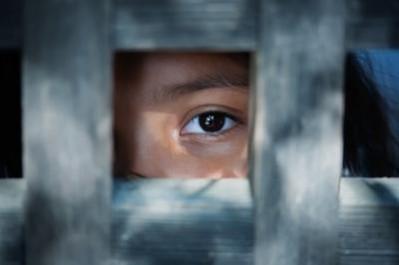
In a significant operation, authorities in Assam disrupted a human trafficking attempt at Tinsukia railway station, rescuing 26 minor girls and young women. These individuals were reportedly being trafficked to Tamil Nadu using forged documents. The operation, conducted on a Friday, was a joint effort by the Railway Protection Force (RPF) and the Government Railway Police (GRPF) during a routine inspection. Five suspects, including both men and women, were detained at the scene, believed to be part of the trafficking network.
During initial questioning, one of the accused, Bidyut Dutta, claimed that the victims were being taken to work in a textile factory in Tamil Nadu. However, authorities are treating this claim with caution and are investigating the broader network behind the trafficking attempt. Human trafficking remains a persistent issue in Upper Assam, particularly in the tea garden regions, where vulnerable families are often targeted with false promises of employment and financial aid. Victims, primarily children and young women, are trafficked to other states for exploitative labor or worse.
The Assam government has recently introduced a comprehensive state policy aimed at combating human trafficking and witch-hunting. This policy underscores the state's commitment to creating a society free from exploitation and abuse. It envisions a safe and inclusive environment where every individual can access their rights and services without fear. The policy identifies trafficking as a rapidly expanding organized crime and witch-hunting as a deeply entrenched social evil, both disproportionately affecting women and girls.
Assam's Strategic Challenges and Policy Measures
Assam's strategic location, sharing borders with six northeastern states as well as Bangladesh and Bhutan, adds to the complexity of the trafficking crisis. The state has already enacted the Witch Hunting (Prohibition, Prevention and Protection) Act, 2018, which classifies the offence as cognizable, non-bailable, and non-compoundable. The policy calls for a coordinated, multi-sectoral response focusing on prevention, survivor protection and rehabilitation, and stringent legal action against offenders. The Department of Women and Child Development has been appointed the nodal agency for implementing the policy, with support from various departments and the formation of committees at the state, district, and gaon panchayat levels to ensure grassroots-level intervention.

The issue of human trafficking in Assam is not new. Historically, the region has been a hotspot for such activities due to its geographical and socio-economic conditions. The tea garden regions, in particular, have been vulnerable to trafficking due to the economic hardships faced by the families residing there. Traffickers often exploit these vulnerabilities, promising better opportunities and financial stability, only to lead the victims into exploitative situations.
In recent years, there have been several similar incidents where authorities have managed to intercept trafficking operations. These efforts have been bolstered by increased awareness and the implementation of stricter laws and policies. However, the challenge remains significant, given the organized nature of these trafficking networks and their ability to adapt to changing circumstances.
Community Involvement and Future Prospects
The recent operation at Tinsukia railway station is a testament to the effectiveness of coordinated efforts between various law enforcement agencies. It highlights the importance of routine inspections and the need for vigilance in areas prone to trafficking activities. The involvement of multiple agencies, such as the RPF and GRPF, ensures a comprehensive approach to tackling the issue, addressing both the immediate threat and the underlying factors contributing to trafficking.
The Assam government's policy on human trafficking and witch-hunting is a step in the right direction. By focusing on prevention, protection, and rehabilitation, the policy aims to address the root causes of trafficking and provide support to survivors. The emphasis on legal action against offenders is crucial in deterring future trafficking attempts and ensuring justice for the victims.


![Too drunk to walk? Karnataka to drop heavily intoxicated revellers home, sets up rest centres for New Year crowds [Watch] Too drunk to walk? Karnataka to drop heavily intoxicated revellers home, sets up rest centres for New Year crowds [Watch]](https://data1.ibtimes.co.in/en/full/826552/too-drunk-walk-karnataka-drop-heavily-intoxicated-revellers-home-sets-rest-centres-new-year.png?w=220&h=135&l=50&t=40)








![Too drunk to walk? Karnataka to drop heavily intoxicated revellers home, sets up rest centres for New Year crowds [Watch]](https://data1.ibtimes.co.in/en/full/826552/too-drunk-walk-karnataka-drop-heavily-intoxicated-revellers-home-sets-rest-centres-new-year.png?w=220&h=138)
![Too drunk to walk? Karnataka to drop heavily intoxicated revellers home, sets up rest centres for New Year crowds [Watch]](https://data1.ibtimes.co.in/en/full/826552/too-drunk-walk-karnataka-drop-heavily-intoxicated-revellers-home-sets-rest-centres-new-year.png?w=220&h=135)


